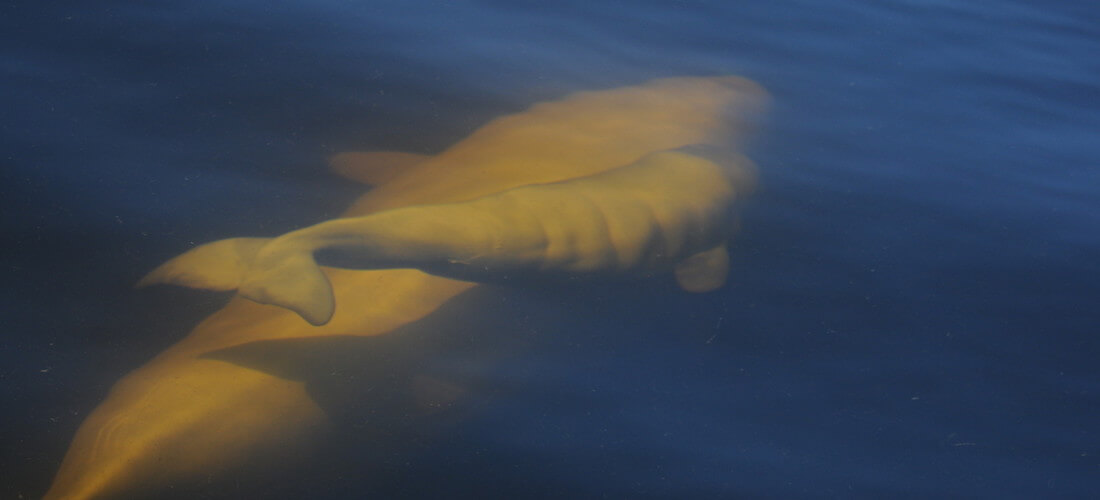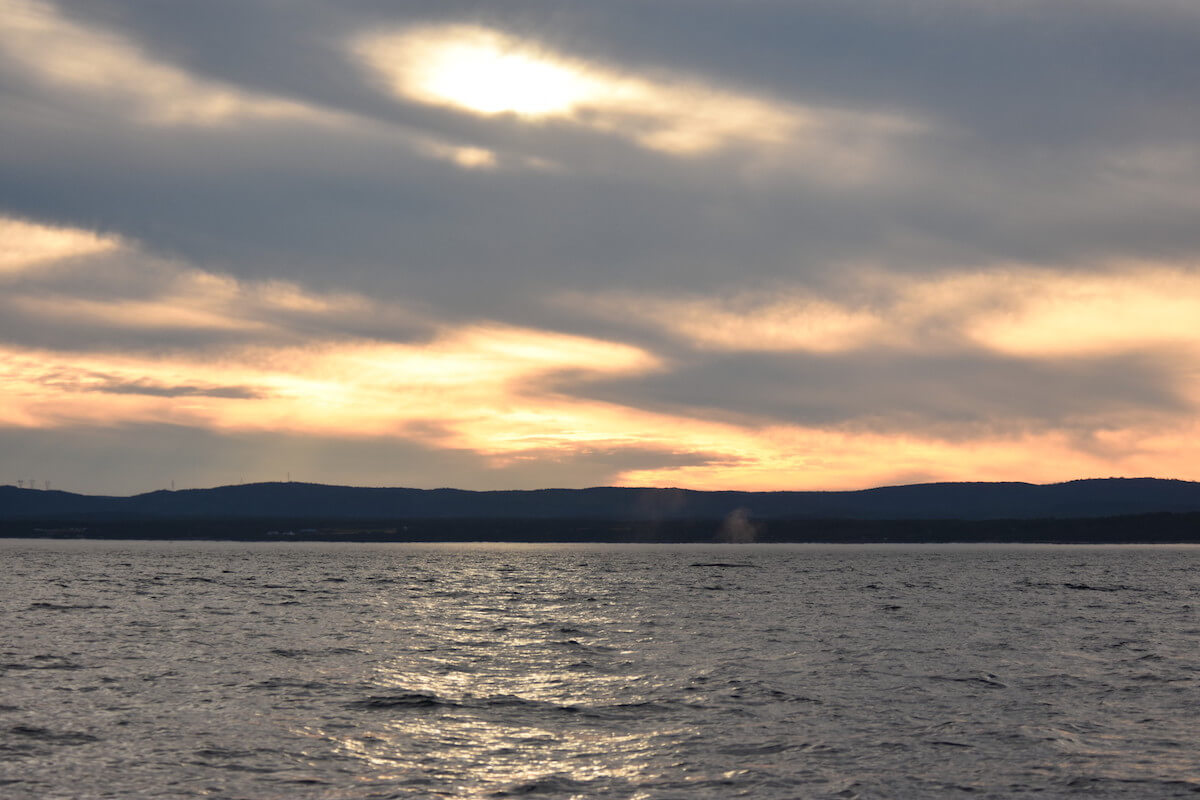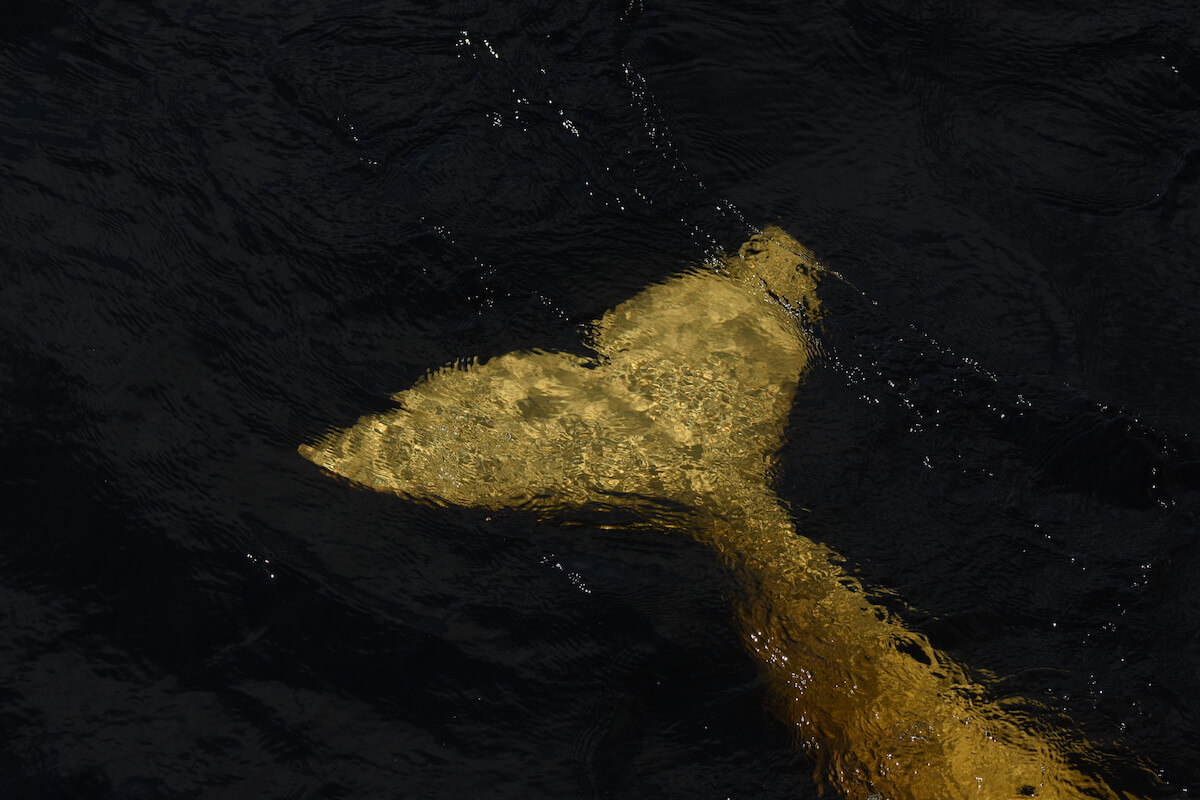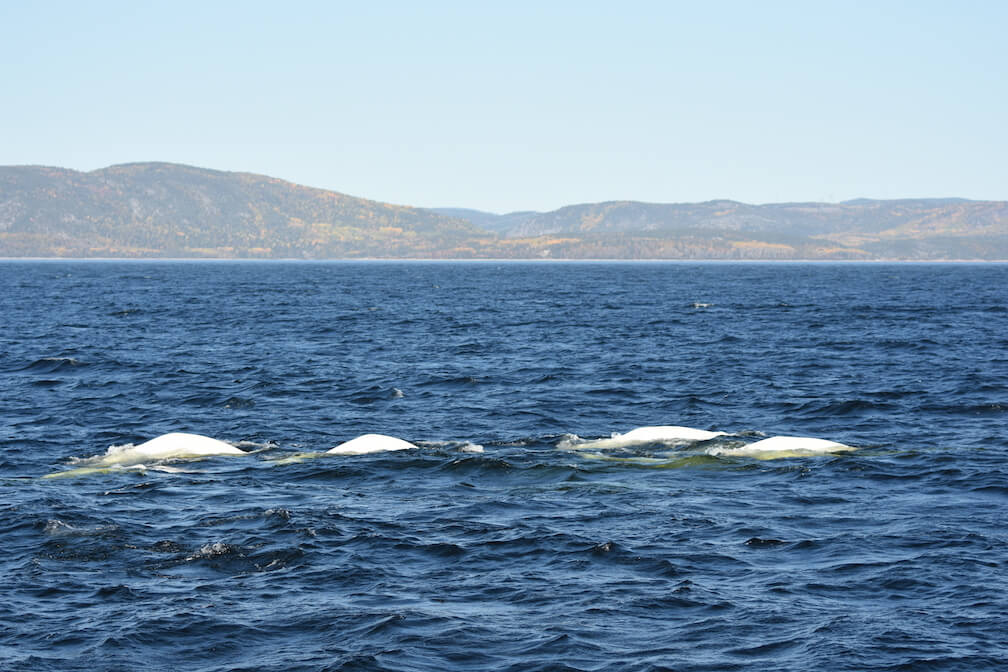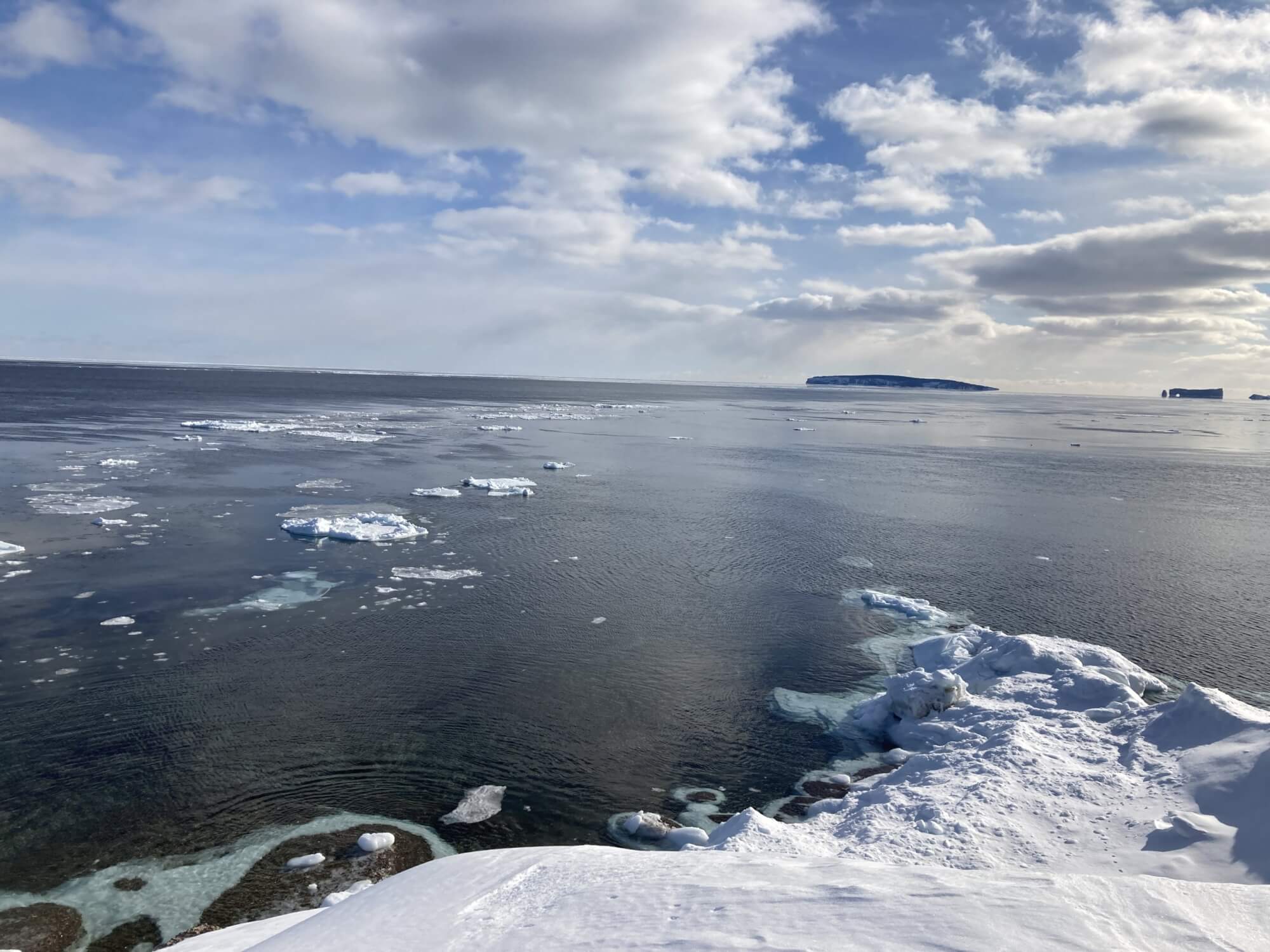Despite the 1979 ban on commercial whaling that decimated the St. Lawrence beluga and the implementation of numerous protection measures, these white whales are still endangered. Their population has been declining at a rate of 1% per year since the early 2000s. Several factors are already suspected of having impeded the beluga’s recovery. However, a new study led by Ocean Initiative researcher Rob Williams and his team shows that climate change could be added to the list.
Three well-identified threats
It is established that the belugas of the St. Lawrence face a number of so-called sublethal threats. In other words, these threats are a not a direct cause of beluga mortality such as entanglement or ship strikes, but they do exert pressure that, over the long term, puts strain on the animals’ health and their ability to survive. Rob Williams and his team therefore created a viability model, i.e. a mathematical projection to assess the long-term effects of these stressors on population growth. Three main ‘suspects’ were taken into account.
The first silent threat is the presence of chemical contaminants in the environment. Beluga habitat is located just downstream of one of the most industrialized regions on the planet. Belugas are therefore exposed to a multitude of contaminants which, over the years, have accumulated in their tissues. These compounds include PCBs, DDT and mirex, amongst others. Several of these substances are suspected of being linked to certain major health issues reported in belugas. Although the use of several of these contaminants is now strictly regulated or even banned in Canada and their concentrations in the waters of the St. Lawrence have since declined, other substances, such as PCBs and PBDEs, are still very much present.
Another notable stressor is the presence of anthropogenic underwater noise. This is caused by the heavy maritime traffic in the region, including commercial ships, ferries, pleasure craft and whale-watching cruises, all of which produce ambient noise in beluga habitat. The species’ essentially sound-based communication is therefore disrupted. Calves are especially vulnerable to this threat.
The availability of the beluga’s main prey, including herring and groundfish, was also taken into account in the researchers’ viability model. These prey are suspected to be highly variable, or even decreasing, over the past several years, which is likely having an impact on the ability of the population – particularly calves – to survive.
Finding a best-case scenario for belugas
Two major conclusions emerge from the projections made by Rob Williams and his colleagues. First, the researchers found that minimizing just one – or even two – of the three main stressors would not be enough for the population to rebound. Indeed, all three factors would need to be mitigated to allow for a recovery. However, even in the best current scenarios, it is estimated that the St. Lawrence beluga population would grow at a mere 0.3% per year.
Why such a low figure? According to the researchers, this might be explained not only by the belugas’ reduced reproductive capacities in recent decades, but also by an important new finding. A fourth element was integrated into the complex equation of their recovery: climate change.
Climate factor comes into play
Indeed, though not directly responsible for the precarious situation of belugas, climate change reduces the resilience of these cetaceans by changing and affecting vital elements of their environment while amplifying some of the threats that are already present.
For example, seasonal ice is essential for belugas, helping to buffer against strong offshore waves in winter, thus reducing the effort the animals have to make to brave the currents. However, winter ice cover of the St. Lawrence has been declining for several years, and was even absent in 2021[DA1] (article in French). It is therefore hypothesized that belugas must expend greater amounts of energy in winter than they did before, which likely undermines their fitness.
Moreover, less ice means smoother sailing for ships. If the trend continues, a potential uptick in winter maritime transport in the St. Lawrence and ensuing noise pollution would therefore be possible in the years to come.
One can also question the impact the decline in winter ice cover is having on the beluga’s prey. Seasonal ice is essential to the life cycle of a number of aquatic species, so it is possible that its reduction will have an effect on the beluga’s food chain.
Rising temperatures in the St. Lawrence are also responsible for a decrease in available oxygen in the water (article in French), particularly at greater depths. The extent of the consequences of this phenomenon is not yet fully understood, but fish living near the seabed are probably already suffering (article in French). This is worrisome considering that some of these species are part of the beluga’s diet.
Thus, even if climate change is not the main cause of the decline of the St. Lawrence beluga, it exacerbates many of the issues the species faces and compromises the population’s ability to withstand other stress factors. In order to offer belugas the best chance of survival over the coming decades, it is essential that the fight against climate change be integrated into today’s conservation efforts, conclude Rob Williams and his team.


